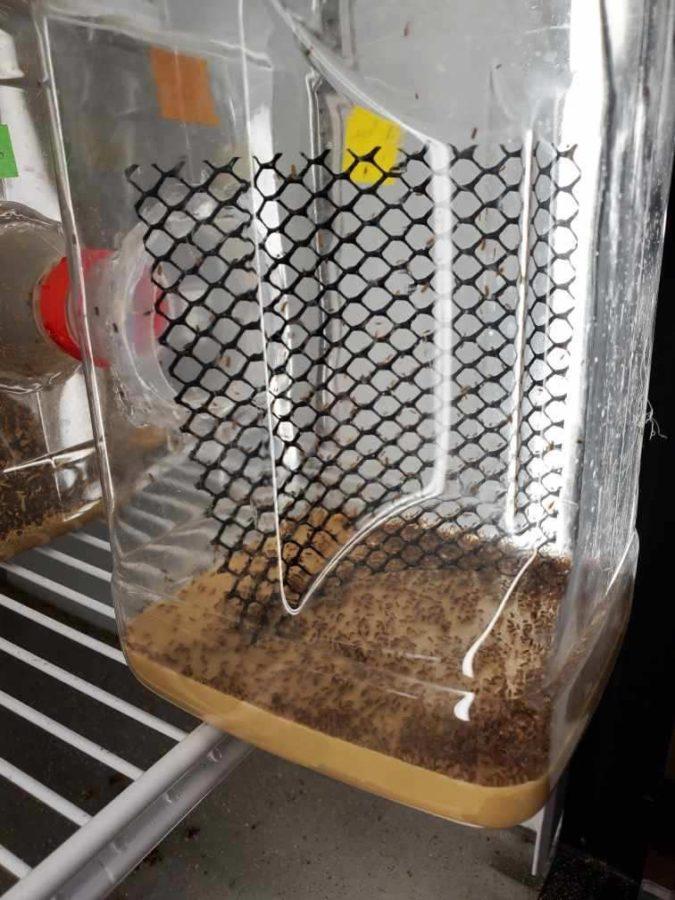UK researcher explores the risks and benefits of new pest control method
October 23, 2019
There are many research labs operating inside the walls of the University of Kentucky, and one such lab is exploring the potential risks and benefits of a new method for a common pest control technique.
The sterile insect technique is an accepted method of controlling populations of bugs. This method bathes bugs in radiation; the radiation makes them sterile, or incapable of reproducing. From there, the sterile bugs are released into the environment, where they take over a population and reduce the number of insects in it due to no offspring being produced.
Dr. Nicholas Teets, an assistant professor in the Department of Entomology is looking at changing this technique from using radiation to altering genes.
This research, which Teets started in 2017 upon receiving a grant from the USDA, is looking into changing the genes in the males of their model species, fruit flies, to accomplish the same goal as dousing them in radiation.
However, the research is still relatively new, and the long-term effects of modifying genes in this way are not well understood. As a result, this method is currently illegal.
Teets and his lab assistants are setting out to see what the risks and benefits are to using this genetic modification method instead of radiation.
According to Teets, radiation is only partially effective in controlling insect populations, and it does not work on mosquitoes (which carry many different diseases, including malaria and the Zika virus). In addition, he stated that using radiation actually harms insects, and unlike genetic modification, radiation is not reversible.
Currently, the lab is looking into the success of this method under varying environmental conditions, including different temperatures.
Teets remarked that overall, the technique is appearing to be very effective, where the populations of fruit flies are being controlled due to the “transgenic mutants,” or the sterilized males.
In addition to the amount of success the lab has been seeing, Teets mentioned that legality for the genetics side of the sterile insect technique looks promising.
“The biggest obstacle at this point is public approval,” he said, discussing how people generally view genetic modification as a bad thing.
In addition to public approval, there are a couple of known risks for this method, where unintended effects are introduced into the environment with the genetically modified insects. The biggest is that genes can jump between species, making other insects sterile that were not meant to be sterilized in the environment.
Teets hopes that this lab will continue to show success, and that in the next five years, actual pests, such as mosquitoes, will be studied.
Ultimately, the goal of this sterile insect technique is to be able to limit populations of bugs as needed, for instance, in cases where insect-borne illnesses start an epidemic. This way, the spread of diseases like the Zika virus can be completely controlled and, in some cases, completely eradicated, before they can have a major impact on humans.
































































































































































